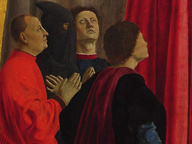Around Ai Weiwei. Photographs 1983 – 2016

© Ai Weiwei Studio / Ai Weiwei | Ai Weiwei, Beijing Photographs 1993-2003, The Forbidden City during the SARS Epidemic, 2003
From 28 October 2016 to 19 February 2017
Turin
Place: Camera - Centro Italiano per la Fotografia
Address: via delle Rosine 18
Times: 11am-07pm; Thursday 11am-09pm. Closed on Tuesday
Responsibles: Davide Quadrio
Organizers:
- MiBACT
- Regione Piemonte
- Città di Torino
Ticket price: full € 10, reduced € 6, free under 12 yrs.
Official site: http://camera.to
Along an exhibition itinerary that includes photographic and video materials, with a number of documents never seen before, Around Ai Weiwei highlights the various stages of the artistic career of Ai Weiwei – a provocative and outspoken figure – investigating not only his artistic poetics from his debut right up to the present day, but also his role in the cultural, social and political debate, both in China and throughout the world. The exhibition explores the genesis of Ai Weiwei as a public figure and as an icon of the Asiatic world, as well as stimulating a reflection on the way in which the contemporary environment has transformed him and thus pondering ‘who’ Ai Weiwei has become.
“In a world of exhibitions showcasing Ai Weiwei’s monumental works, we conceived of this project – says the curator Davide Quadrio – to expressly redirect the attention of the public to documentary evidence that circumnavigates the artist’s life, as a testimonial to his fascinating journey as a man, creator and activist. For most, Ai Weiwei is a global product of Chinese origin.”
When entering Camera we encounter a single monumental artwork. Soft Ground is a reminder of the Tiananmen crisis, which was a pivotal moment in the history of contemporary China. For over a decade, these events directly affected artists all over the country, and still today, it represents a trauma that has not been completely overcome. Soft Ground is a 45 meter-long carpet with a 1:1 photo reproduction of the traces left behind by tanks on a dirt track to the southwest of Beijing. The tracks are reminiscent of the traces left behind by the tanks sent into Tiananmen Square during the protest of 1989. As we walk softly along its tracks within the exhibition space, the scale and size of the historical incident is translated.
On the wall, to the right of the carpet, runs Ai Weiwei’s life in New York in a series of photographs entitled New York Photographs 1983-1993; the images are like stills from a black and white film, sequencing a selection of private moments and encounters from over 10,000 pictures that Ai took when he lived in New York, from 1983 to 1993.
After this introductory promenade, and as a consequence of what it implies, the exhibition chronologically develops through thematic chapters. Clustered between the overarching narrative, the two projects Chang’an Boulevard and Beijing: The Second Ring set the scene in the capital of China in the early 2000s. The video works dissect and observe the city as it evolves and morphs.
Also included is a rarely seen interview by Daria Menozzi Before Ai Wei Wei (1995) in which the artist engages in an intimate conversation, giving glimpses of his first years back in China following his return from New York. This rarely seen documentary is of utmost importance in affirming Ai’s sensible contribution to the intellectual, cultural and artistic discourse in China in the 1990s. Before Ai Wei Wei is a rare compendium of what he was thinking and doing at that point in history.
Upon this photographic stage, highlighting the urbanism and architecture of the times, the exhibition displays Beijing Photographs 1993-2003. This never before seen series of photographs is debuting at Camera. The series portrays the life and actions of Ai Weiwei and his entourage just before the quick process of transformation that ultimately turned Beijing into the global city it is today.
The autobiographical storyline of the exhibition is punctuated with a selection of sculptural artworks that become symbols mirroring the development of Ai Weiwei’s life over four decades. The artist’s readymades and porcelain works are an expansion on the multilayered abilities and subtleties of Ai. Each sculpture manifests as a point of reflection, allowing for a suspension of time as visitors pass through Camera’s rooms.
The last section of the exhibition premieres one of Ai’s latest projects: Refugee Wallpaper, a collage of 17,000 images shot by Ai Weiwei during his ongoing contact with the refugee emergency which is spreading across Europe, the Middle East and elsewhere. This endless series seems designed to make viewers question the implications of the artist’s activism. Within the delicate boundaries of global events and international politics, the drama of migration has turned into a spectacle like everything else.
“Here the voice of the artist fills the void of the thousands that go unheard,” Davide Quadrio explains, “but at the same time we bear witness to an obsessive act of voyeurism that triggers feelings of unease. Does this grandiose multiplication of records make us see and understand more, or less? Years after his self-portraits series, what remains and what has changed in the artist’s take on self-representation?”
The exhibition is curated by Davide Quadrio with the collaboration of You Mi, Adjunct Curator and Ryan Nuckolls, research and coordination in China.
The exhibition Around Ai Weiwei is supported by Compagnia di San Paolo and Lavazza and it is promoted and organised with the Fondazione Palazzo Strozzi, Florence alongside the major retrospective Ai Weiwei. Libero.
SCARICA IL COMUNICATO IN PDF
COMMENTI

-
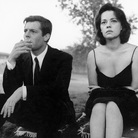 Dal 10 July 2025 al 10 August 2025
Roma | Palazzo Esposizioni Roma
Dal 10 July 2025 al 10 August 2025
Roma | Palazzo Esposizioni Roma
-
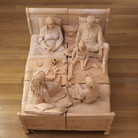 Dal 10 July 2025 al 3 November 2025
Casale Marittimo | Bolgheri, Castagneto Carducci, Casale Marittimo
Dal 10 July 2025 al 3 November 2025
Casale Marittimo | Bolgheri, Castagneto Carducci, Casale Marittimo
-
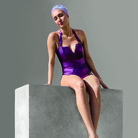 Dal 4 July 2025 al 21 September 2025
Roma | Palazzo Bonaparte
Dal 4 July 2025 al 21 September 2025
Roma | Palazzo Bonaparte
-
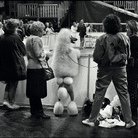 Dal 28 June 2025 al 21 September 2025
Roma | Palazzo Bonaparte
Dal 28 June 2025 al 21 September 2025
Roma | Palazzo Bonaparte
-
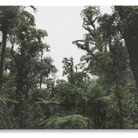 Dal 24 June 2025 al 29 October 2025
Firenze | Museo Novecento
Dal 24 June 2025 al 29 October 2025
Firenze | Museo Novecento
-
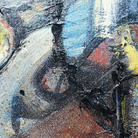 Dal 26 June 2025 al 18 July 2025
Firenze | Palazzo Sacrati Strozzi
Dal 26 June 2025 al 18 July 2025
Firenze | Palazzo Sacrati Strozzi
